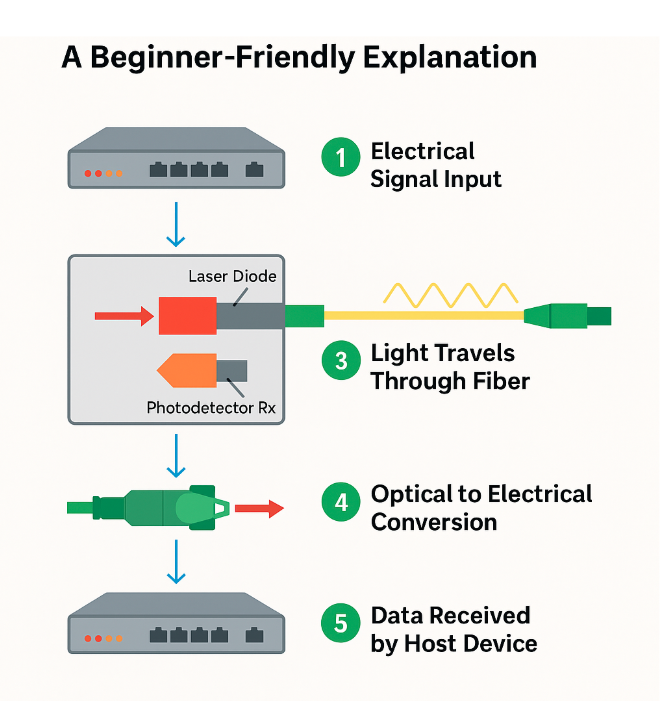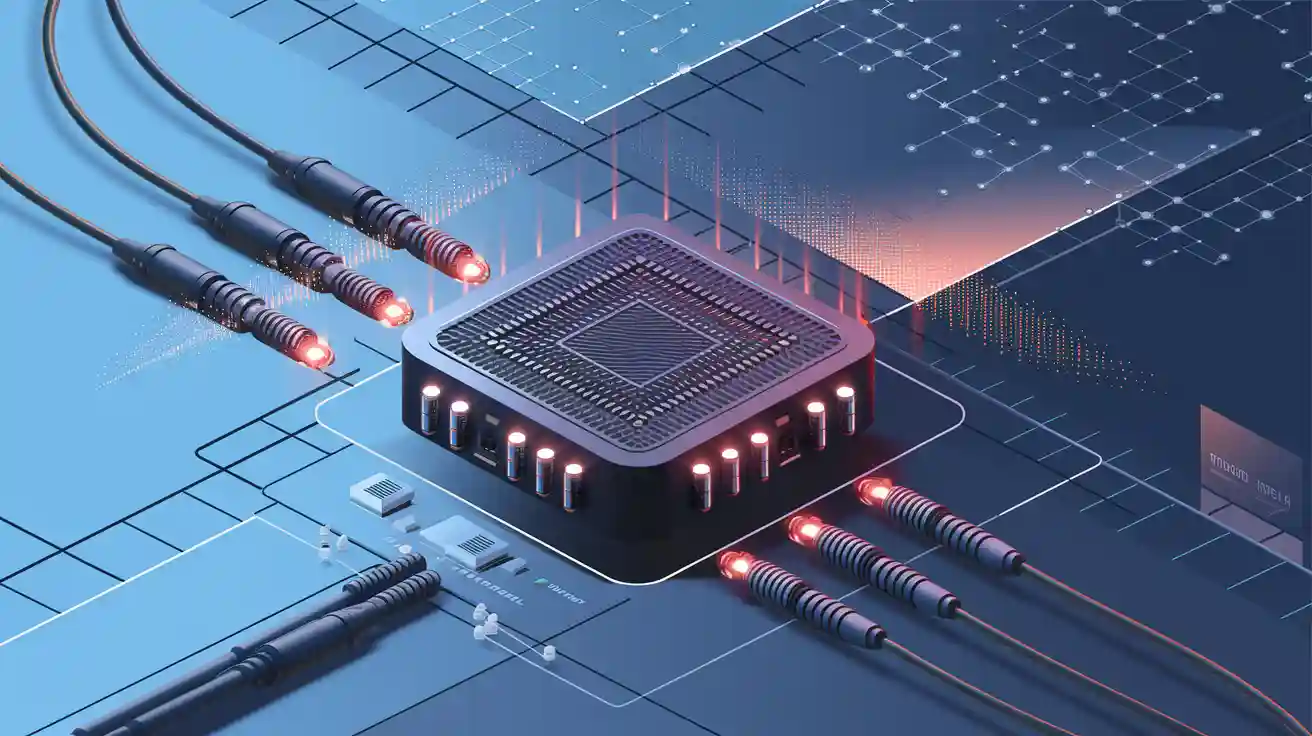
Optical transceivers are crucial for today’s communication networks. They convert electrical signals into light to transmit data quickly through fiber optic cables. You encounter them daily, such as when streaming videos or making calls. Faster networks, like 5G and AI systems, demand advanced technology.
In today’s high-speed digital world, the demand for fast and reliable data transmission is higher than ever. Whether it's a data center, telecom network, or enterprise switch, optical transceivers play a critical role in making sure information travels quickly and accurately. For instance, the LINK-PP 100G QSFP28 Optical Transceiver Module facilitates ultra-fast connections.
But if you're new to fiber optics or just getting started with network hardware, you might wonder:
How do optical transceivers actually transmit data?
Let’s break it down in simple terms.
The Data Transmission Process: Step-by-Step

Let’s walk through how data is transmitted using an optical transceiver:
Step 1: Electrical Signal Input
Every process begins with data in electrical form, coming from a device like a switch, router, or server. This electrical signal enters the transceiver through its electrical interface (usually the gold-plated pins you see at the end of the module).
Step 2: Electrical-to-Optical Conversion (Tx Side)
Once inside, the transmitting side (Tx) of the transceiver uses a laser diode (such as a VCSEL or DFB laser) to convert the electrical signal into light pulses. These light pulses represent the binary 1s and 0s of digital data.
Step 3: Light Travels Through Fiber
The light signal then enters a fiber optic cable — typically either single-mode (for long distances) or multi-mode (for shorter distances). In the fiber, light can travel kilometers with very little loss or distortion, much better than copper cables.
Step 4: Optical-to-Electrical Conversion (Rx Side)
When the light reaches the destination transceiver, the receiving side (Rx) of that module uses a photodetector to convert the light signal back into an electrical signal.
5. Data Received by the Host Device
Finally, the electrical signal is passed on to the receiving device — another switch, server, or router — which reads and processes the data.
What Components Make It Happen?
Each optical transceiver typically contains:
Laser Diode (for transmitting light)
Photodiode (for receiving light)
Driver Circuitry (to control the laser)
Amplifiers and Filters (to clean the signal)
Controller Chip (for diagnostics, digital monitoring, etc.)
These components are packaged into form factors like SFP, SFP+, QSFP, and QSFP28, depending on the speed and application.
What Affects Transmission Quality?
Even though optical transceivers are highly reliable, the following factors can impact performance:
Dirty or damaged fiber connectors
Mismatched module types (e.g., SM vs MM)
Exceeding distance limits
Poor-quality third-party modules
Temperature fluctuations in harsh environments
Always ensure compatibility and clean connections to maintain signal integrity.
Conclusion
Optical transceivers convert electrical signals into light for high-speed, low-latency data transmission. By leveraging laser diodes, photodetectors, and advanced modulation, they power modern networks from data centers to 5G infrastructure.
Looking for reliable optical transceivers? Explore LINK-PP’s Optical Transceiver Selection Guide for seamless connectivity!
FAQ
Q: Can I use a 10G transceiver in a 1G port?
A: Yes, but the port will operate at 1G speed (backward compatibility).
Q: Why does my transceiver overheat?
A: Poor ventilation or excessive power draw—check cooling and compatibility.
Q: What’s the difference between SR and LR transceivers?
A: SR = Short-range (MMF), LR = Long-range (SMF).
Tip: Always review your optical transceiver’s specs to ensure it fits your network setup.




